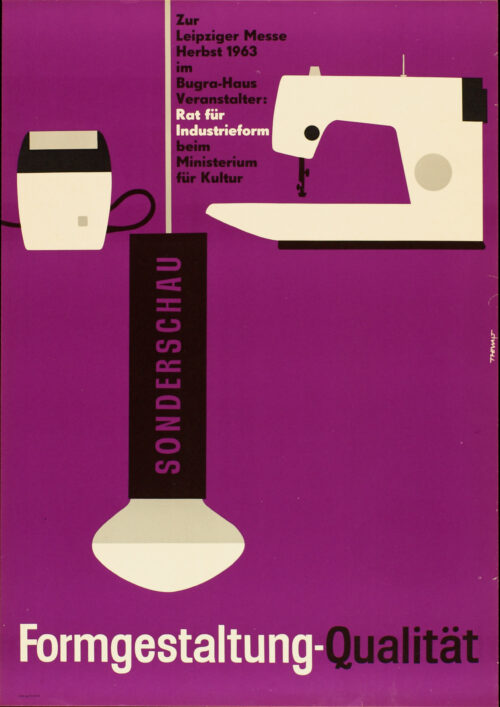Design at the Leipzig Trade Fair
With its long tradition, the Leipzig Trade Fair played a major role in East–West trade during the Cold War. Its big ‘sample fairs’, held in both spring and autumn, were not only an international meeting place but also a showcase for East Germany’s economy.
From 1963 to 1990, the Leipzig Trade Fair awarded its coveted ‘Messegold’, a gold medal in recognition of outstanding quality, performance, and design. This honour was not limited to companies from socialist countries. The fair also boosted the country’s own efforts toward achieving a high standard in industrially produced items, especially in terms of design.
At the autumn fair of 1963, the Ministry of Culture’s Council for Industrial Design presented a special exhibition of award-winning products from East German manufacturers. The exhibition poster by Karl Thewalt (1928–2007) shows the Bebo Sher electric razor by Jürgen Peters (1931–2009), the Veritas 8017 sewing machine by Klaus Kunis (1931–96), and the Kontrast pendant lamp by Lutz Rudolph (1936–2011), all three designed in 1961.
The Council for Industrial Design (1962–64) was a predecessor to the Office for Industrial Design. Its chairman was the architect and designer Friedrich Engemann (1898–1970), who studied at the Bauhaus and later taught at the University for Industrial Design at Burg Giebichenstein in Halle. The Council included representatives from the industry and from important trade and economic planning committees, with Rudi Högner (1907–95) and Horst Michel (1904–89) representing the interests of design.
Countries: GDR
Tags: Graphics, Product design
